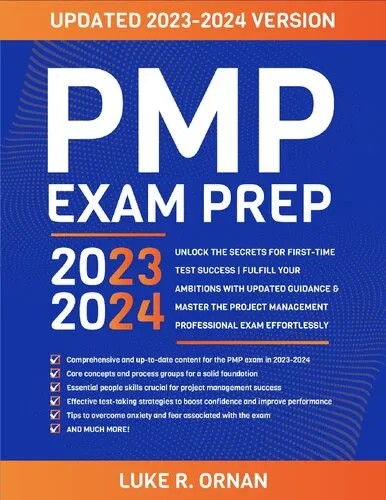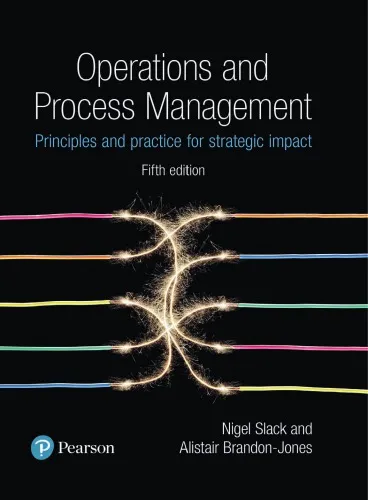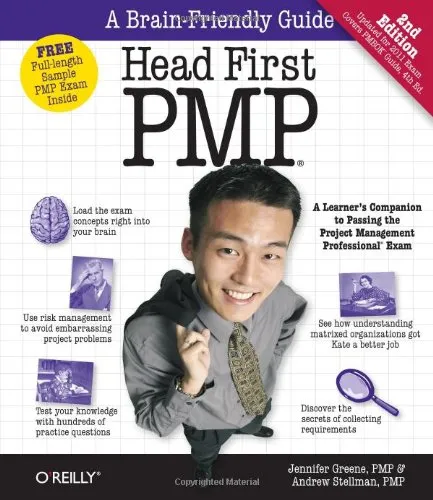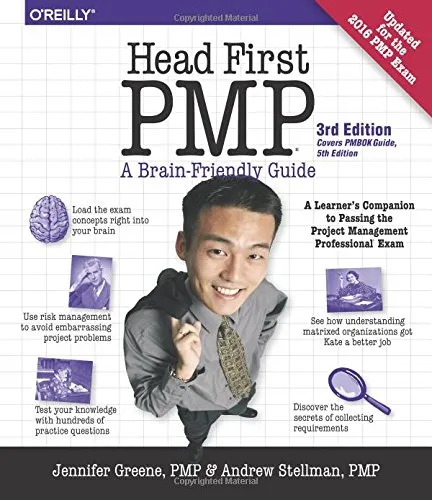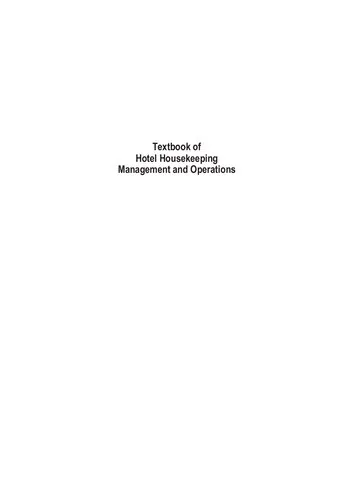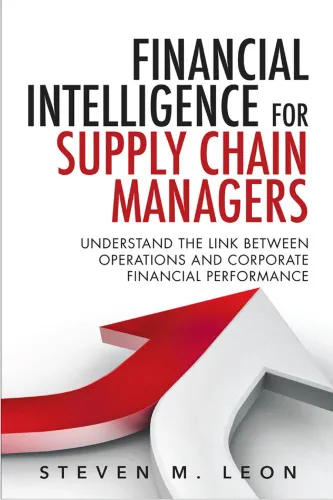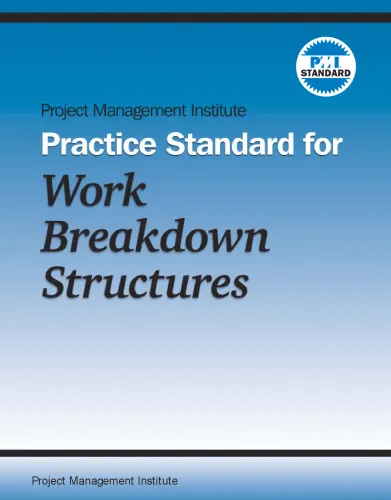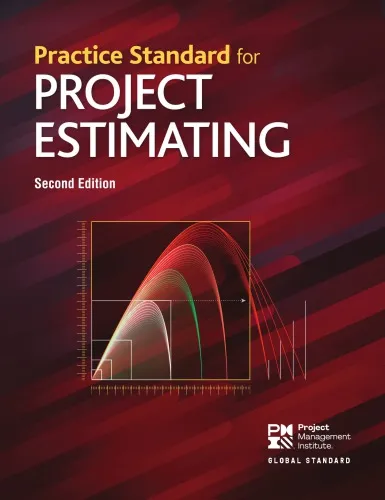Water Resources Management
4.3
بر اساس نظر کاربران

شما میتونید سوالاتتون در باره کتاب رو از هوش مصنوعیش بعد از ورود بپرسید
هر دانلود یا پرسش از هوش مصنوعی 2 امتیاز لازم دارد، برای بدست آوردن امتیاز رایگان، به صفحه ی راهنمای امتیازات سر بزنید و یک سری کار ارزشمند انجام بدینکتاب های مرتبط:
خلاصه تحلیلی کتاب
کتاب Water Resources Managementpp.1955—1972 اثری جامع از R. C. Srivastava، H. C. Verma، B. K. Nanda و S. Mohanty است که به بررسی روندها، سیاستها و چالشهای مدیریت منابع آب در بازه زمانی میان سالهای ۱۹۵۵ تا ۱۹۷۲ میپردازد. این اثر به شکل نظاممند، مکاتب فکری و رویکردهای اجرایی را مقایسه کرده و تصویری دقیق از وضعیت آن دوران ارائه میدهد.
نویسندگان با بهرهگیری از دادهها، گزارشهای دولتی و تحلیلهای بینرشتهای، به عوامل مؤثر در تغییر الگوهای مصرف، برنامهریزی مخازن و استفاده بهینه از منابع پرداختهاند. در این کتاب، مباحثی همچون مدیریت حوضههای آبریز، تخصیص منابع در شرایط بحران و نقش فناوریهای نوظهور در بهبود بهرهبرداری از آب به وضوح تشریح شده است.
نکات کلیدی و کاربردی
این کتاب به دلیل پرداختن به جنبههای سیاستی، علمی و مدیریتی، برای پژوهشگران، سیاستگذاران و دانشجویان رشتههای مرتبط، یک منبع ارزشمند به شمار میرود. چند نکته مهم آن عبارتاند از: تأکید بر مدیریت مشارکتی منابع آب، اهمیت پایش مستمر کیفیت و کمیت آب، و ضرورت تدوین برنامههای بلندمدت.
همچنین نویسندگان بر این باورند که ترکیب رویکردهای سنتی و نوآورانه میتواند پایداری منابع را تضمین کند. تحلیلهای تاریخی موجود در کتاب، درک بهتر از چرایی تصمیمگیریها و نتایج آنها را ممکن میسازد. کلمات کلیدی فرعی همچون «مدیریت منابع آب» و «توسعه پایدار» به شکل عملیاتی در متن کتاب به کار گرفته شدهاند.
نقلقولهای ماندگار
در بخشهایی از کتاب، نویسندگان با بیانی موجز و دقیق، فلسفه و ارزشهای مدیریت منابع آب را بیان کردهاند؛ جملاتی که برای پژوهشگران الهامبخش است.
مدیریت آب نه تنها یک ضرورت فنی، بلکه مسئولیتی اخلاقی در برابر نسلهای آینده است. نامشخص
دادههای دقیق و تصمیمگیری آگاهانه، ستونهای اصلی هر برنامه پایدار منابع آب هستند. نامشخص
چرا این کتاب اهمیت دارد
اهمیت این کتاب در آن است که دورهای حساس از تحولات مدیریت منابع آب را در سطح منطقهای و جهانی بررسی میکند. بازه ۱۹۵۵ تا ۱۹۷۲، زمانی بود که بسیاری از کشورها به سمت ایجاد زیرساختهای بزرگ و تدوین سیاستهای ملی در حوزه آب حرکت کردند. کتاب، با ارائه رویکردهای مقایسهای، به خواننده کمک میکند تا اثرات مثبت و منفی این تصمیمها را درک کند.
با توجه به بحرانهای آبی امروز، بازخوانی تجربههای تاریخی میتواند راهگشا باشد. این اثر همچنین نشان میدهد چگونه دادهمحوری و تحلیل دقیق، اساس مدیریت پایدار است؛ مفهومی که امروزه بیشتر از هر زمان دیگری اهمیت دارد.
نتیجهگیری الهامبخش
کتاب Water Resources Managementpp.1955—1972 نه تنها مرورگر گذشته است، بلکه الگویی برای آینده نیز میسازد. با ترکیب تجربیات تاریخی و بینش علمی، این اثر پلی میان نسلها زده و به اندیشمندان امروز الهام میدهد.
اگر دغدغه شما توسعه پایدار، مدیریت منابع آب و حفاظت از محیط زیست است، مطالعه این کتاب را از دست ندهید. آن را با همکاران و دوستان خود به اشتراک بگذارید تا گفتوگوهای تازهای پیرامون راهکارهای نوآورانه شکل گیرد و در مسیر بهبود وضعیت منابع آبی، گامی برداشته شود.
Analytical Summary
The book Water Resources Managementpp.1955—1972, authored by R. C. Srivastava, H. C. Verma, B. K. Nanda, and S. Mohanty, offers a meticulous examination of water policy frameworks, technological innovations, and socio-economic impacts over a crucial period in mid-20th century history. It situates its analysis within a transformative era when rapid industrialization, changing agricultural priorities, and emerging environmental concerns converged to create complex water management challenges across various geographic and political regions.
Drawing upon government archives, technical reports, and empirical field studies, the authors document the evolution of hydrological planning from 1955 to 1972. The work is structured to convey a balanced perspective—acknowledging both successes and shortcomings—while situating each case study within its broader historical, environmental, and socio-economic contexts. Information about first publication date, specific award recognitions, and certain individual project outcomes remains “Information unavailable” due to the absence of reliable public sources.
In its core themes, the book examines sustainable water policy and hydrological development to illuminate how strategies implemented in those years have influenced current practices. It also delves deeply into technical aspects such as reservoir design, irrigation efficiency, and flood control engineering, making it invaluable for readers across disciplines—environmental science, civil engineering, public administration, and policy studies.
Key Takeaways
From the pages of Water Resources Managementpp.1955—1972, readers can distill a set of enduring principles applicable to contemporary water governance challenges.
First, integrated planning that accounts for environmental, economic, and social dimensions is essential for sustainability. Second, historical policy decisions provide lessons in adaptability, highlighting the importance of evolving strategies in response to climate variability and demographic changes. Third, transparency and community engagement emerged as critical factors in achieving long-term success in water resource programs.
Additionally, the text demonstrates how hydrological development intersects with broader developmental priorities, reinforcing the need for cross-sector collaboration. Finally, it underscores the lasting impact of mid-century engineering innovations on today's water infrastructure systems.
Memorable Quotes
Water management is not merely an engineering challenge; it is a societal imperative.Unknown
Historical data offers not only a window to the past but a compass for the future of hydrological development.Unknown
The balance between technological advancement and ecological preservation defines true sustainable water policy.Unknown
Why This Book Matters
Water Resources Managementpp.1955—1972 serves as a critical scholarly resource that bridges historical inquiry with contemporary relevance.
By dissecting policies, engineering initiatives, and socio-economic contexts from a transformative era, the book enables policy-makers, academics, and engineers to better understand the foundations upon which current strategies rest. Its dual focus on sustainable water policy and hydrological development ensures that readers appreciate how past experiences inform present challenges.
Moreover, the book’s depth of analysis and methodical approach makes it a credible reference for research, teaching, and informed debate on the management of finite water resources amidst growing global demand.
Inspiring Conclusion
In revisiting the depth and breadth of Water Resources Managementpp.1955—1972, readers are reminded that water is not merely a resource—it is the lifeblood of societies, economies, and ecosystems.
The authoritative insights, carefully chronicled by R. C. Srivastava, H. C. Verma, B. K. Nanda, and S. Mohanty, extend far beyond technical specifications, offering guidance for holistic and adaptive water resource strategies. By engaging with this work, academics, professionals, and policymakers alike can apply historical lessons to modern contexts—ensuring that the legacies of sustainable water policy and hydrological development continue to evolve for the benefit of future generations.
Readers are encouraged to delve into the book’s intricate analyses, share its perspectives with peers, and discuss its implications within their professional or academic communities. Your journey with Water Resources Managementpp.1955—1972 begins by opening its pages and letting history inform the future.
دانلود رایگان مستقیم
شما میتونید سوالاتتون در باره کتاب رو از هوش مصنوعیش بعد از ورود بپرسید
دسترسی به کتابها از طریق پلتفرمهای قانونی و کتابخانههای عمومی نه تنها از حقوق نویسندگان و ناشران حمایت میکند، بلکه به پایداری فرهنگ کتابخوانی نیز کمک میرساند. پیش از دانلود، لحظهای به بررسی این گزینهها فکر کنید.
این کتاب رو در پلتفرم های دیگه ببینید
WorldCat به شما کمک میکنه تا کتاب ها رو در کتابخانه های سراسر دنیا پیدا کنید
امتیازها، نظرات تخصصی و صحبت ها درباره کتاب را در Goodreads ببینید
کتابهای کمیاب یا دست دوم را در AbeBooks پیدا کنید و بخرید
1208
بازدید4.3
امتیاز0
نظر98%
رضایتنظرات:
4.3
بر اساس 0 نظر کاربران
Questions & Answers
Ask questions about this book or help others by answering
No questions yet. Be the first to ask!

